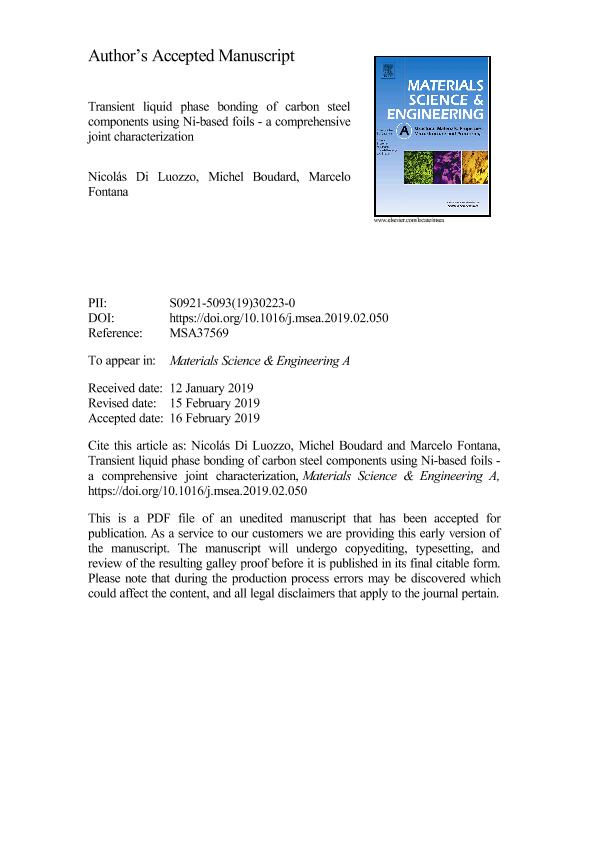Artículo
Transient liquid phase bonding of carbon steel components using Ni-based foils – A comprehensive joint characterization
Fecha de publicación:
03/2019
Editorial:
Elsevier Science SA
Revista:
Materials Science and Engineering A: Structural Materials: Properties, Microstructure and Processing
ISSN:
0921-5093
Idioma:
Inglés
Tipo de recurso:
Artículo publicado
Clasificación temática:
Resumen
The transient liquid phase bonding (TLPB) process is one of the selected joining technologies to replace threaded connections in solid expandable tubulars. In particular, for expandable hot-rolled seamless carbon steel tubular products using Ni-based amorphous metallic foils as filler material. In this work, a comprehensive mechanical properties and microstructural characterization was carried out in TLP-bonded bars for this base metal/filler material combination. Both the joint and the heat affected zone exhibited a strength which compares well with the base metal, and a ductility in accordance with that which is typically specified for steel arc-welded joints. A coalesced lath-like bainitic microstructure was found at the joint. In addition, and by means of orientation imaging, a parent austenite grain - which is shared by the joint and an adjacent ferrite grain from the base metal - was found, which demonstrates the epitaxial nature of the TLPB solidification process. Also, a cell-block-like structure at ferrite grains next to the joint was detected, due to the plastic deformation developed in tensile-tested samples at room temperature.
Archivos asociados
Licencia
Identificadores
Colecciones
Articulos(INTECIN)
Articulos de INST.D/TEC.Y CS.DE LA ING."HILARIO FERNANDEZ LONG"
Articulos de INST.D/TEC.Y CS.DE LA ING."HILARIO FERNANDEZ LONG"
Citación
Di Luozzo, Nicolás; Boudard, Michel; Fontana, Marcelo; Transient liquid phase bonding of carbon steel components using Ni-based foils – A comprehensive joint characterization; Elsevier Science SA; Materials Science and Engineering A: Structural Materials: Properties, Microstructure and Processing; 751; 3-2019; 51-61
Compartir
Altmétricas




